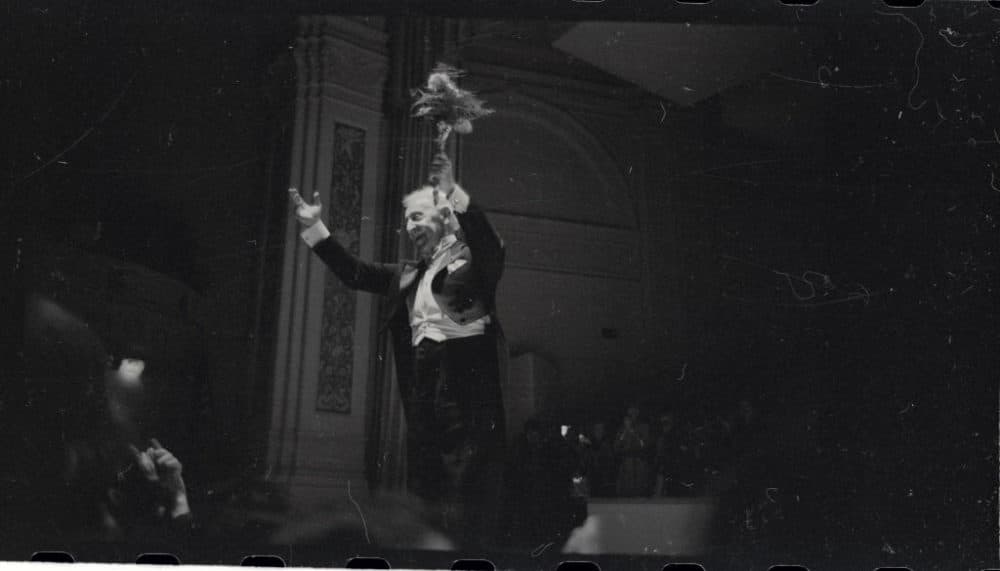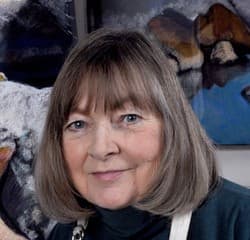Advertisement
Commentary
Ambition after 80. Yes, that's a thing

None of us can know what it is to be old until we arrive at that mysterious place. Though the term "elderly" serves as an umbrella over the young old, the middle-aged old, and the very old, the act of aging itself and the ensuing results are distinct to the individual.
Many of us are still working or raising grandchildren or volunteering or engaged in creative activities late into our lives. Some of us are just coming into their own after years of bringing up families or working at jobs that weren't particularly fulfilling. Others have had exceedingly demanding or boring jobs and may take a more tao approach to what is called retirement.
I appreciate the wisdom in such books as “The Sage's Tao Te Ching, Ancient Advice for the Second Half of Life,” but I still find it difficult to relinquish such things as ambition — even though, at 89, I’m well past that nebulous half-way point of my life.
After years of freelancing as an author of books for young people, I was offered a position teaching creative writing in a low-residency MFA program. It was my first salaried job, and I was 72. By that time my five children were grown, and my years of working as a child radio actress were far behind me. I loved teaching graduate students and continued in that capacity for 10 years, until it became difficult to balance my work with caring for my husband, who suffered from dementia.
In my 50s, one of my then-teenage daughters gave me “Silences” by Tillie Olsen. It speaks eloquently to the fact that creative lives, particularly those of women, are often disrupted by the needs of others. (That one of my daughters noticed this continues to mean a great deal to me.)
Today, there is a movement afoot to pair successful entertainers with those whose greatest days appear to be over. Lady Gaga and Tony Bennett are one example, and they have produced some highly successful work. The theory seems to be that a more vigorous and younger performer can energize the work of an older one. At this year’s Oscars, Lady Gaga was also called upon to shepherd a frail Liza Minelli onto the stage in a wheelchair, so that the aging entertainment icon could introduce the Academy Award for best picture. Lady Gaga was indeed gracious, but the bright lights and large audience seemed to overwhelm Minelli and she appeared confused. How much better it would have been to show clips from a recent CBS Sunday Morning interview when the famous star, who had once commanded the stage with her talent and energy, was more relaxed and in control.
And how much more accurate would be our collective picture of older individuals if we did more to recognize the people who continue to follow their passions well into their later years, and who are often doing their best work.
Advertisement
Instead, we see endless coverage about elders with dementia and Alzheimer’s while very little attention is paid to older people who continue to work at any number of crafts, arts, and other professions into their 90s and beyond. Some Asian countries call these individuals Human Living Treasures. But our culture often relegates them to the category of has-beens, especially in the literary arts, where debut authors are valued over older writers who have been silently advancing in their craft and with the kind of wisdom that can only come with age. Consider Kent Haruf's novel, "Our Souls at Night," one of his best, came out right after his death at 71. Margaret Atwood keeps publishing one book after another while in her mid-80s.
For some time, now, I have published a blog called "Aging and the Creative Process" where I share essays meant to inspire artists of all ilks to continue producing work in their later years. It also includes interviews with people who work in many genres well past what the world considers to be their use-by date. I want us to celebrate what many elders can do well, and not always focus on what they can't.
Older people may have to make accommodations to an ailment, a decrease in stamina, and diminished output. And there is the chance that they won't be able to finish what they start. But the process itself gives meaning to their lives. What’s more, a number of people have created enduring masterpieces at advanced ages. Arthur Rubenstein presented one of his greatest performances at Carnegie Hall when he was 89. Grandma Moses began her long career when she was 76. Henry Berstein published his first book at 96. The painter, Guy Warren, continues to work and have exhibitions at 101. Faith Ringgold, the illustrator and visual artist, has a retrospective at the New Museum in New York City right now, and is working on a series about aging. She’s 91. Are these people the exception? I don't think so; a number of elders work in private for the pure joy if it.
It is the way of the world that things and people deteriorate over time, but a great many spirits and minds continue to grow. These need to be acknowledged and encouraged and presented as talismans to younger generations.
